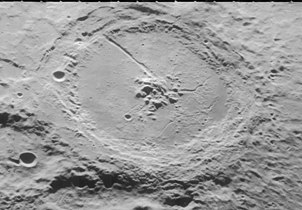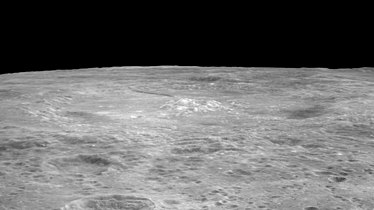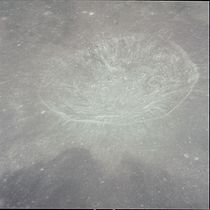
Arzachel is a relatively young lunar impact crater located in the highlands in the south-central part of the visible Moon, close to the zero meridian. It lies to the south of the crater Alphonsus, and together with Ptolemaeus further north the three form a prominent line of craters to the east of Mare Nubium. The smaller Alpetragius lies to the northwest, and Thebit is to the southwest along the edge of the mare.

Dawes is a lunar impact crater located in the wide straight between Mare Serenitatis and Mare Tranquilitatis. To its southwest lies the larger crater Plinius, and to its northeast sits the Mons Argaeus mountain rise. It is named after British astronomer William Rutter Dawes.

Hyginus is a lunar caldera located at the east end of the Sinus Medii. It was named after ancient Roman astronomer Gaius Julius Hyginus. Its rim is split by a 220 kilometer-long rille, Rima Hyginus, that branches to the northwest and to the east-southeast. The crater is deeper than the rille, and lies at intersection of the rille's branches. Together, the crater and the rille form a prominent feature in an otherwise flat surface. Smaller craters along the length of the rille may have been caused by the collapse of an underlying structure.

Taruntius is a lunar impact crater on the northwestern edge of Mare Fecunditatis. It was named after ancient Roman philosopher, mathematician and astrologer Lucius Tarutius Firmanus. To the northwest is the lava-flooded crater Lawrence, and to the north lie the craters Watts and da Vinci.

Sharp is a lunar impact crater located to the west of the Sinus Iridum bay of the Mare Imbrium, beyond the Montes Jura range. To the southwest is the crater Mairan. Because of its location and foreshortening, Sharp appears elliptical from the earth.
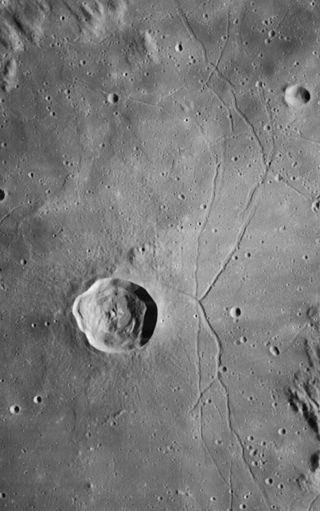
Triesnecker is a prominent lunar impact crater that is located in the Sinus Medii, near the central part of the Moon's near side. Its diameter is 25 km. It was named after Austrian astronomer Franz de Paula Triesnecker. It is located to the north-northwest of the crater Rhaeticus, and to the east-southeast of the flooded Murchison.

Snellius is a lunar impact crater located near the southeast limb of the Moon.
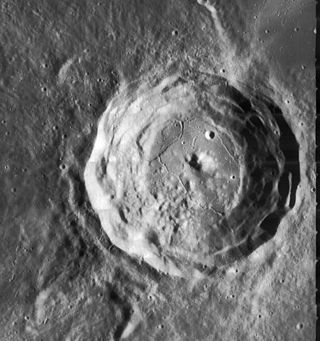
Cardanus is a lunar impact crater that is located in the western part of the Moon, in the western part of the Oceanus Procellarum. Due to its location the crater appears very oval because of foreshortening, and it is viewed almost from the side.
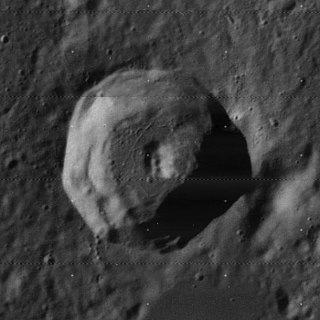
Timaeus is a lunar impact crater in the northern part of the Moon, on the north edge of Mare Frigoris. It forms part of the southwestern wall of the large and irregular walled plain W. Bond. The rim of Timaeus is somewhat pentagonal in shape, with rounded corners. There is a central rise in the midpoint of the crater floor.

Bianchini is a lunar impact crater that lies along the northern Jura Mountains that ring the Sinus Iridum, in the northwestern part of the near side of the Moon. It was named after Italian astronomer Francesco Bianchini. The impact of this crater near the edge of the Jura Mountains deposited some material into the Sinus Iridum floor.
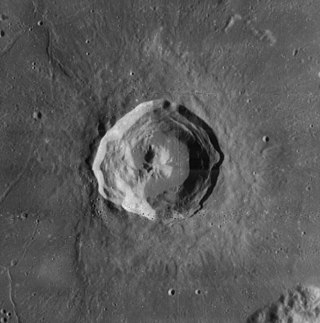
Bürg is a prominent lunar impact crater in the northeast part of the Moon. It lies within the lava-flooded, ruined crater formation designated Lacus Mortis. To the south and southeast is the crater pair Plana and Mason. To the west, beyond the rim of Lacus Mortis, is the prominent crater Eudoxus.

Palitzsch is a lunar impact crater that is located in the southeast part of the Moon, near the southeast rim of the crater Petavius. Just to the southwest of Palitzsch is Hase, while to the east-southeast is Legendre.

Hase is a lunar impact crater that is located in the rugged southeast part of the Moon, to the south-southwest of the prominent walled plain Petavius. Palitzsch and Vallis Palitzsch are attached to the northeastern rim of Hase.
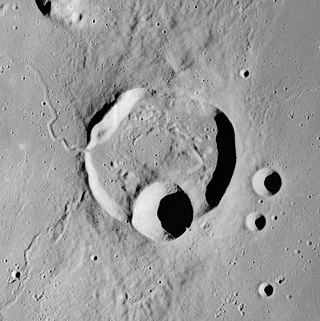
Krieger is a lunar impact crater on the eastern part of the Oceanus Procellarum. It is located to the north-northwest of the flooded crater Prinz, and north-northeast of the prominent ray crater Aristarchus. To the northwest lies the small Wollaston. The crater was formally named in 1935.

Campanus is a lunar impact crater that is located on the southwestern edge of Mare Nubium. It was named after Italian astronomer Campanus of Novara. It forms a crater pair with Mercator just to the southeast. Along the southern rampart of Campanus is the small lunar mare named Palus Epidemiarum. To the southwest is the small crater Dunthorne.
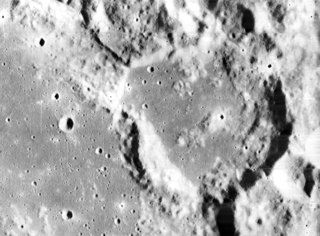
Condon is a lunar impact crater that lies on the eastern shore of the Sinus Successus, a bay along the northeast edge of Mare Fecunditatis. It was named after American physicist Edward U. Condon in 1976. It lies midway between the larger crater Apollonius to the north and the smaller Webb to the south on the Mare Fecunditatis. Condon was previously designated Webb R.

Wrottesley is a lunar impact crater that is attached to the west-northwestern rim of the larger crater Petavius, and lies along the southeast edge of Mare Fecunditatis. It lies in the southeast part of the moon and appears somewhat foreshortened when viewed from the earth.
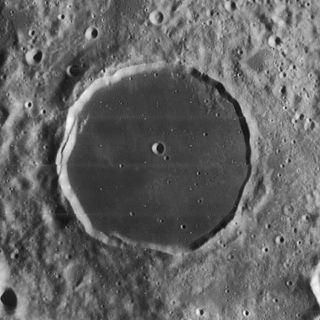
Crüger is a lunar impact crater that is located in the western part of the Moon, to the northeast of the much larger walled plain Darwin.
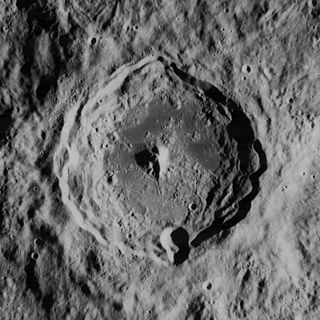
Schlüter is a lunar impact crater that is located near the western limb of the Moon's near side. It lies along the northwestern face of the Montes Cordillera mountain range that encircles the Mare Orientale. Nearly attached to the eastern rim is the damaged crater Hartwig.

Lomonosov is a lunar impact crater that is located just behind the western limb of the Moon. It is almost attached to the east-northeastern outer rim of the larger crater Joliot, and overlies the southern rim of Maxwell. Attached to the southern rim of Lomonosov is the smaller Edison.


